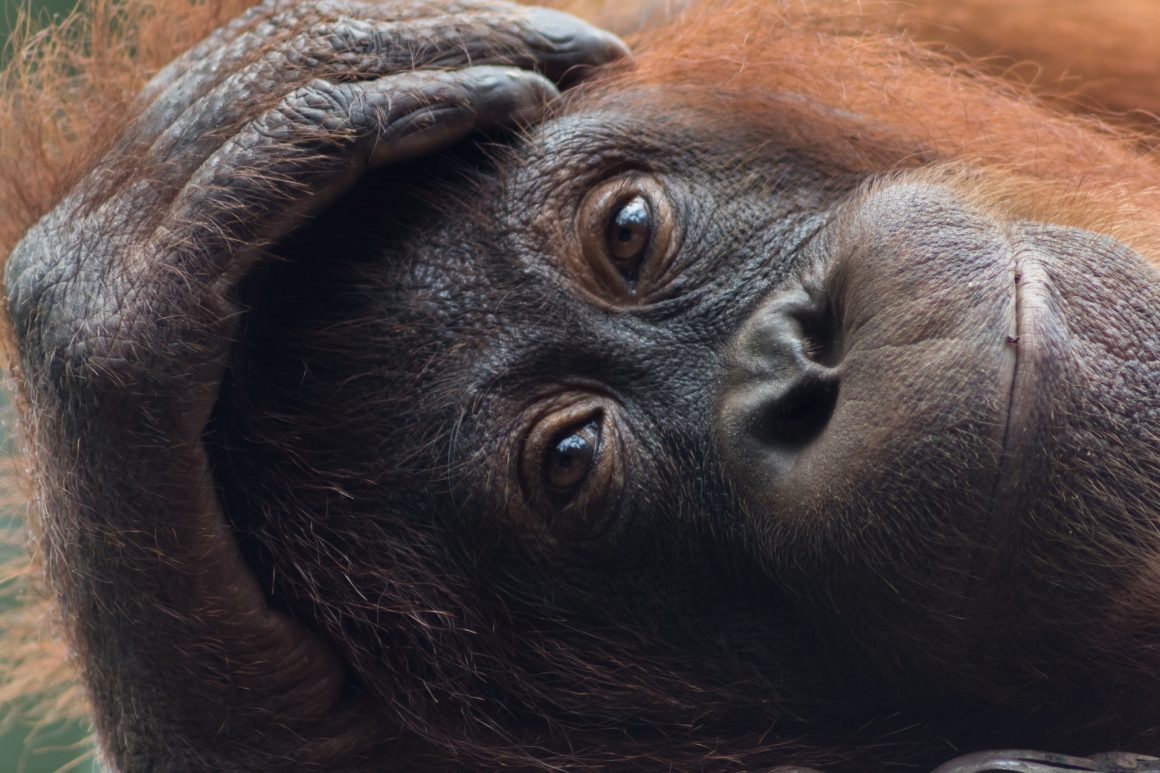
Wildlife Conservation Showcase: Zach Jacobson
By Holly Hastings, April 24 2020 —
As demonstrated so far in this series of conservation articles, there are many lenses through which to view conservation ecology. However, some conservationists argue that the most important comes from a human dimension point of view. The Bornean and Sumatran Orangutans (Orangs) have a stronger pull on the public’s heartstrings because of their human-likeness. As one of our closest living relatives, not only are orangutans important to the biodiversity of the forest, they also provide a window into anthropological understanding of what it means to be human. The World Wildlife Fund (WWF) nicknames them the “red men of the forest.”
Zach Jacobson, a Master’s candidate under the supervision of Dr. Steig Johnson at the University of Calgary’s Department of Anthropology and Archaeology, spent six months on the island of Borneo volunteering for the Borneo Orangutan Survival Foundation (BOSF). BOSF works with the Indonesian government to rescue orangutans from the illegal pet trade or found on palm oil plantations. If the organisation can recapture an adult individual, the priority would be to introduce them to a more natural habitat. Sadly, infants are often a part of the pet trade, and just as humans rely immensely on social learning, they can’t be immediately released or they won’t survive. BOSF has an extensive rehab facility of around 500 orangutan individuals. Orangs go through a multi-year ‘Jungle School,’ a process where they learn to forage, build nests and practice other wild orangutan behaviour. Once an individual is deemed ready to be re-released into a fully wild habitat, they are transported and released into a massive primary forest. And so, Jacobson was positioned at a research facility at the final point of an orangs rehabilitation journey. Working with indigenous Bornean technicians to collect data on the released orangutans.
Jacobson explains that “the goal of the organisation is that these reintroduced orangs will behave similarly to wild orangs, had they not been involved in the pet trade or involved in this process, but it’s typically not the case because we are trying to emulate the orangs upbringing.”
Like humans, orangs rely heavily on their mothers from birth through until adolescence. Mothers teach them what food is safe to eat, how to craft tools, how to build a nest and avoid predators. In the wild, mother Orangs often tickle their infants to induce laughter, so in addition to the obstacle courses in the early stages of jungle school, workers offer their time as babysitters to play with the juvenile orangs. Some fascinating facts about orangs are that they build a new nest to sleep in every night, and also build umbrellas out of leaves to stay dry during the rains that are common to their tropical forests.
One of the main anthropogenic battles that orangutans have to face is habitat deforestation due to the palm oil industry. While the industry doesn’t clear forests, it often degrades them. Primates are important contributors for forest health, forest regeneration and seed dispersal.
Orangutans are classified on the International Union for Conservation of Nature Red List as critically endangered, in which the next category would be ‘extinct in the wild’.
At the sites of Kianjavato and Ranomafana National Park in Madagascar, Jacobson and fellow grad students are monitoring the health of various species of lemur. For his upcoming Master’s research, Jacobson will be focusing on human activities connected to lemurs and carbon storage. Contributing to Johnson’s camera-trapping project, Jacobson will be quantifying the distribution of lemur species throughout the fragmented forest landscape. Camera traps are a non-invasive way to monitor biodiversity and Johnson’s lab will be using them primarily to measure short and long-term changes in lemur communities at Ranomafana National Park and Kianjavato in Madagascar. In attempts to further the use of non-invasive research, the team collects mass amounts of data through this technique. Camera-trapping is conducted by motion-activated infrared flash and “a big component of this is collecting a huge amount of data which allows us to monitor whether these mostly endangered species are surviving on the landscape,” Jacobson said. He investigates two factors — whether human activities are affecting lemurs and whether changing vegetation is affecting lemurs.
Ethnoprimatology, the study of human interaction with non-human primates, is of particular importance to Jacobson. He states, “I feel sometimes people focus solely on primate behaviour or even primate conservation but don’t incorporate human culture and land use. Without Ethnoprimatology we would be missing a huge part of the story which is how humans interact with their environment, the reason primates are endangered is because of these impacts from human culture. I think ethnoprimatology does a nice job of combining these impacts for primate conservation.”
Jacobson emphasizes working with the local community, the people who have their livelihoods invested in a particular forest. This process would include consulting with the local people to find out what is important to them and their way of life. Jacobson says “just like how if someone wanted to study the sustainability of Saskatchewan’s agriculture, they would talk to the farmers and understand how the research could benefit them because that’s the only way anything can have long term success in an area.” Jacobson clarifies that, “you have to make it worthwhile for the local people to prioritize primate livelihoods.”
As the World Wildlife Fund says, “If efforts to protect orangutans are not urgently strengthened, Asia’s only great ape may be lost from the wild forever within a few decades.”
